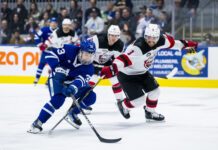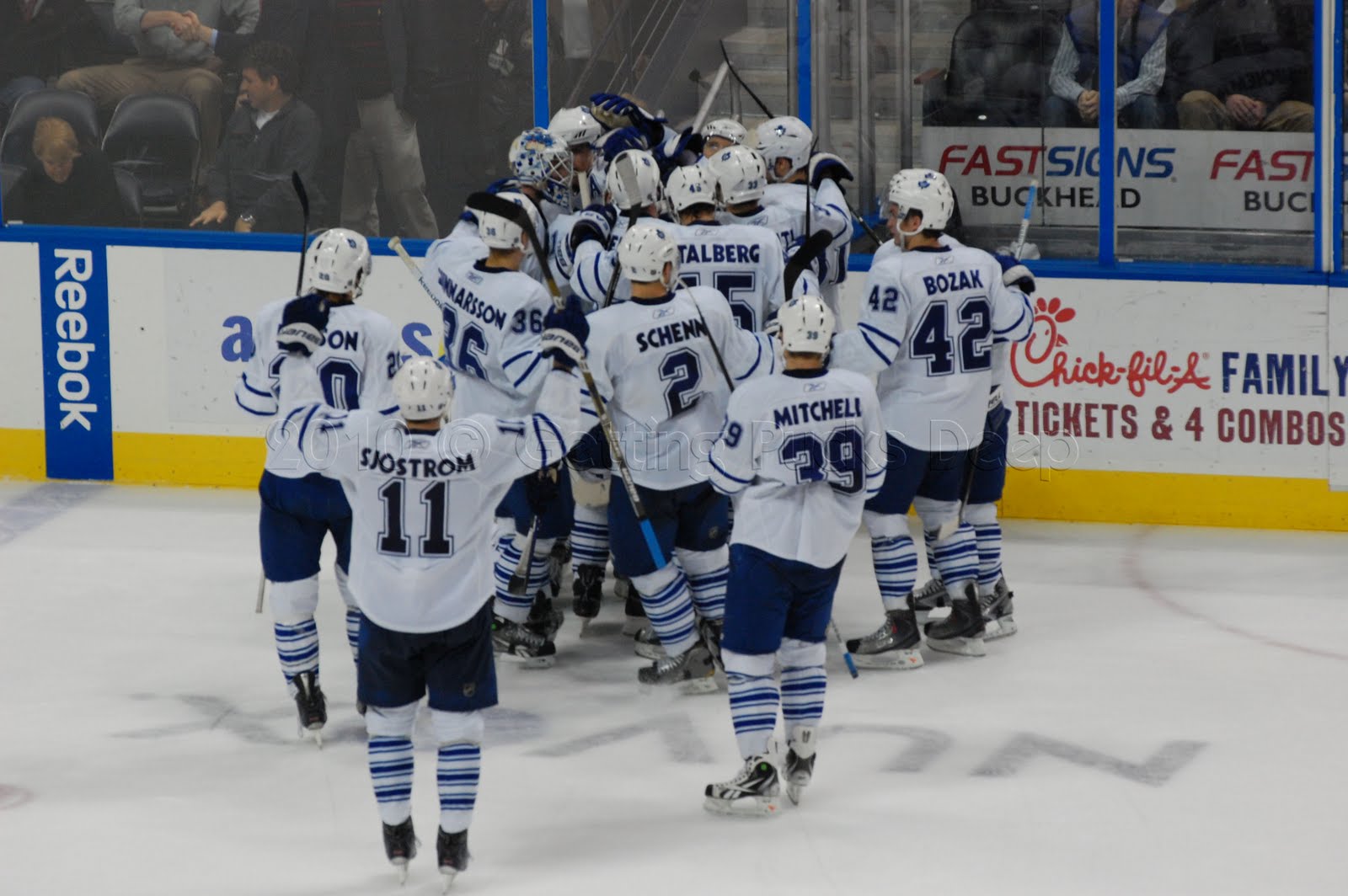With last night’s loss against Nashville, Randy Carlyle’s stint behind Toronto’s bench has spanned more than a season’s worth of games. Recently, there has been much discussion surrounding this team’s identity. Clearly, the current Maple Leafs are one of the best quick-attack squads in the league. They have a collection of highly skilled players, good special teams, and the support of some fantastic goaltending. Yet naysayers are prevalent in the Toronto hockey scene. Their criticism has often focused on the supposedly debilitating shot differential that has characterized this iteration of the Leafs. This is a team that has seen success under Carlyle in spite of the shot differential statistics. Ironically, it wasn’t so long ago that this franchise bucked this category of questionably predictive statistics from the other side of the spectrum.
One only needs to go as far back as the 2009-2010 season – Phil Kessel’s first in Toronto – to bear witness to a Leafs team with a radically different gameplan than that of Carlyle. Love or hate it, the current coaching staff emphasizes quality scoring chances. They are fine with yielding perimeter shots against, while discouraging low-percentage attempts when on the attack themselves. Conversely, the Jason Blake Maple Leafs could not have been more different:
| 2009-2010 rank | 2013-2014 rank | |
|---|---|---|
| S/G | 5 (32.6 ) | 28 (26.5) |
| SA/G | 13 (29.8) | 28 (35.5) |
| G/G | 26 (2.56) | 10 (2.82) |
| GA/G | 29 (3.21) | 10 (2.36) |
| PP% | 30 (14.0%) | 3 (23.6%) |
| PK% | 30 (74.6%) | 16 (82.4%) |
The difference between these two teams from a statistical standpoint are vast. With respect to shot differential, the 2009-2010 Leafs did everything right. Their Fenwick close score was near the top of the league as one would expect with the shot-based stat. By all accounts, Lee Stempniak et al. should have rode these numbers to surefire success, right? Wrong. Despite buying into the “get it on net” mantra with admirable aplomb (heck – pretty sure Jason Blake invented that saying), Toronto stunk their way to 29th in the NHL that year while scoring 2.56 goals/game (26th in the league).
The differences – while not a mystery when accounting for the increased quality of personnel – accentuate the inherent faults of placing too much emphasis on shot differential. Unfortunately, the increased volume of rubber hitting the opposition tender in his chest did not appeal to the sympathy of the regression gods as they refused to bestow more goals upon the desperate Leafs of 2009-2010.
What does this all mean? Not much, really. It is just hockey after all. Anyone with a modicum of familiarity with NHL players could look at the rosters for both of these teams and identify the stronger club. Yet, this very fact reinforces what Dave Nonis and co. have been saying – there is certainly room for analytics in hockey, but a well-trained eye and astute judge of talent still remains the precursor to success.
All told, the comparison between the Ron Wilson Leafs and the newer outfit under Randy Carlyle is an exercise in irony and reflective gratitude. For while the current team has a few significant flaws, this retrospective glance serves as a good reminder: it could be much, much worse.
Friday morning links:
–The Leafs are not afraid of advanced statistics. Nonis: “the biggest thing we use is going to watch a player play”.
–Phaneuf and the Leafs still working on a deal. They’ll get there. At this point it’s just a matter of the familiar negotiating song and dance.
–Grabo comes home. Knowing him, he’ll be fired up and ready to stick it to the Leafs.
–The Leafs goalies are good. Yes, yes they are.

























![[Leafs Links] Reports: Sean Walker likely to be moved, Maple Leafs have inquired; the latest on Chris Tanev, Noah Hanifin, Adam Henrique, Scott Laughton, Jakob Chychrun & more Sean Walker linked to the Maple Leafs](https://mapleleafshotstove.com/wp-content/uploads/2024/01/sean-walker-maple-leafs-flyers-218x150.jpg)
![[Leafs Links] The asking price for Sam Lafferty and Vladislav Gavrikov, the latest on Patrick Kane, and is Toronto lurking as a darkhorse on Timo Meier? Patrick Kane, Chicago Blackhawks trade rumours](https://mapleleafshotstove.com/wp-content/uploads/2023/02/patrick-kane-blackhawks-218x150.jpg)
![[Leafs Links] Marlies head coach names a defenseman to look out for in the Leafs’ farm system; Bruins sniffing around on Chychrun, Schenn; a timeline for Patrick Kane and Jonathan Toews’ deadline decisions Jakob Chychrun, Toronto Maple Leafs trade target](https://mapleleafshotstove.com/wp-content/uploads/2022/02/jakob-chychrun-218x150.jpeg)









